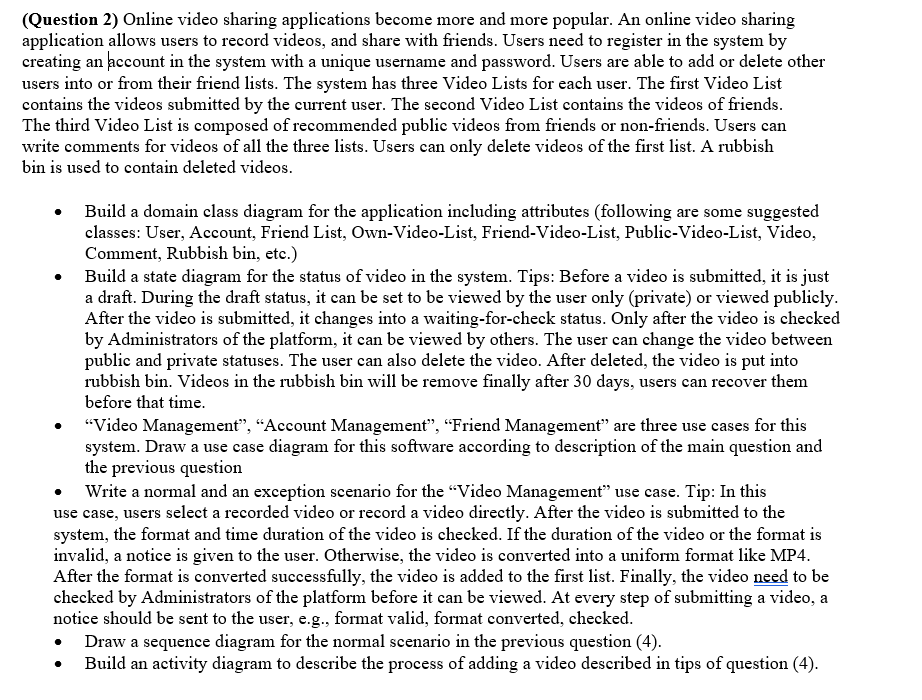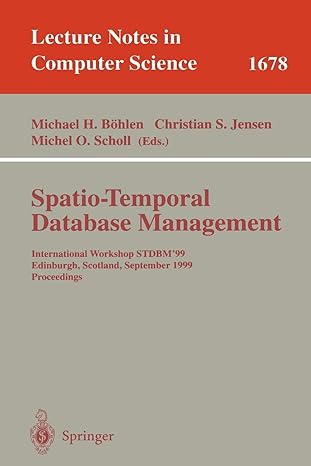Please provide the graphics (actual graphics requested are really important -Don't just input answers without a proper drawn graphic ,otherwise is not valid)

Question 2) Online video sharing applications become more and more popular. An online video sharing pplication allows users to record videos, and share with friends. Users need to register in the system by reating an account in the system with a unique username and password. Users are able to add or delete other isers into or from their friend lists. The system has three Video Lists for each user. The first Video List ontains the videos submitted by the current user. The second Video List contains the videos of friends. The third Video List is composed of recommended public videos from friends or non-friends. Users can vrite comments for videos of all the three lists. Users can only delete videos of the first list. A rubbish in is used to contain deleted videos. - Build a domain class diagram for the application including attributes (following are some suggested classes: User, Account, Friend List, Own-Video-List, Friend-Video-List, Public-Video-List, Video, Comment, Rubbish bin, etc.) - Build a state diagram for the status of video in the system. Tips: Before a video is submitted, it is just a draft. During the draft status, it can be set to be viewed by the user only (private) or viewed publicly. After the video is submitted, it changes into a waiting-for-check status. Only after the video is checked by Administrators of the platform, it can be viewed by others. The user can change the video between public and private statuses. The user can also delete the video. After deleted, the video is put into rubbish bin. Videos in the rubbish bin will be remove finally after 30 days, users can recover them before that time. - "Video Management", "Account Management", "Friend Management" are three use cases for this system. Draw a use case diagram for this software according to description of the main question and the previous question - Write a normal and an exception scenario for the "Video Management" use case. Tip: In this use case, users select a recorded video or record a video directly. After the video is submitted to the system, the format and time duration of the video is checked. If the duration of the video or the format is invalid, a notice is given to the user. Otherwise, the video is converted into a uniform format like MP4. After the format is converted successfully, the video is added to the first list. Finally, the video need to be checked by Administrators of the platform before it can be viewed. At every step of submitting a video, a notice should be sent to the user, e.g., format valid, format converted, checked. - Draw a sequence diagram for the normal scenario in the previous question (4). - Build an activity diagram to describe the process of adding a video described in tips of question (4)







